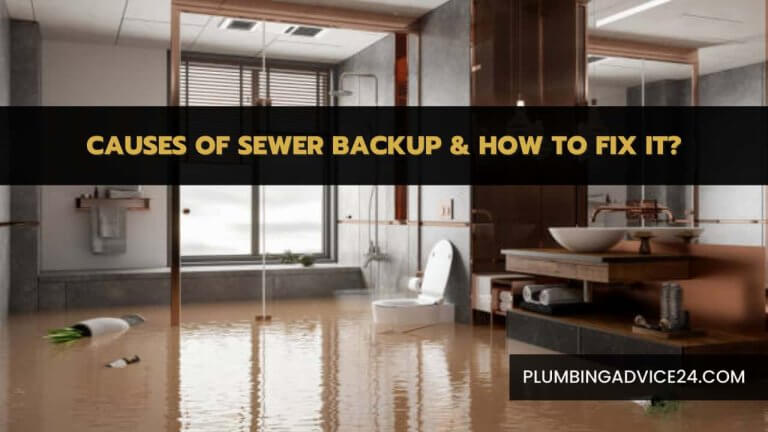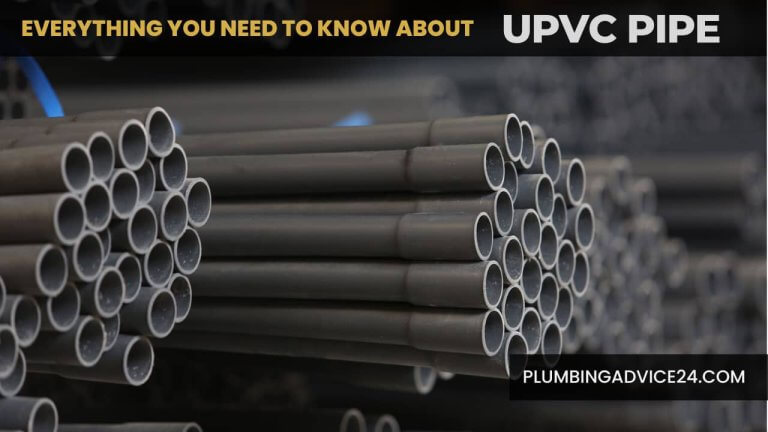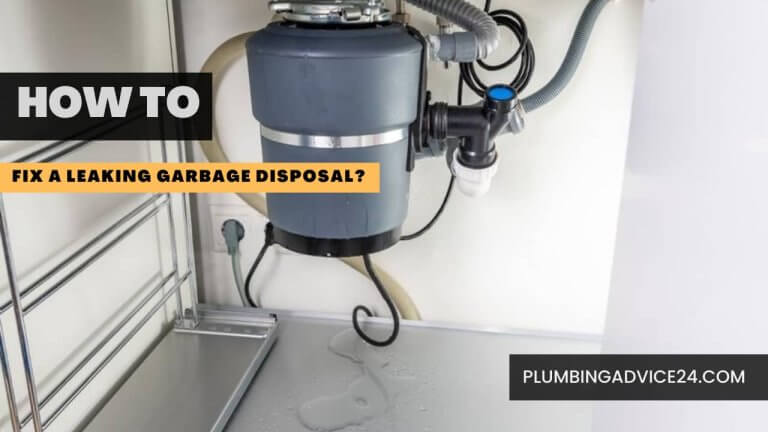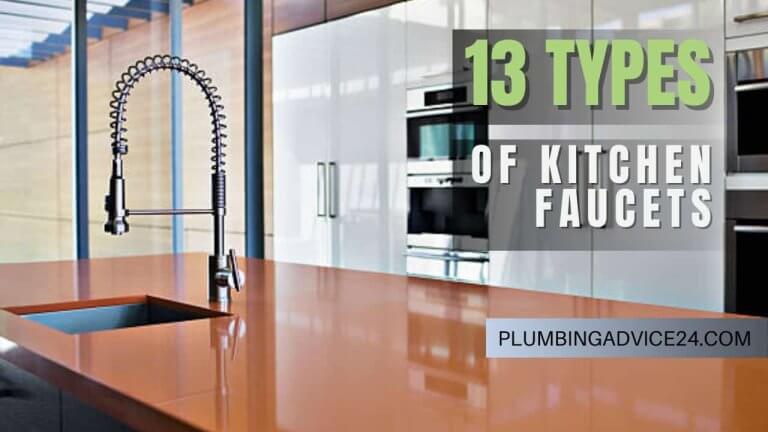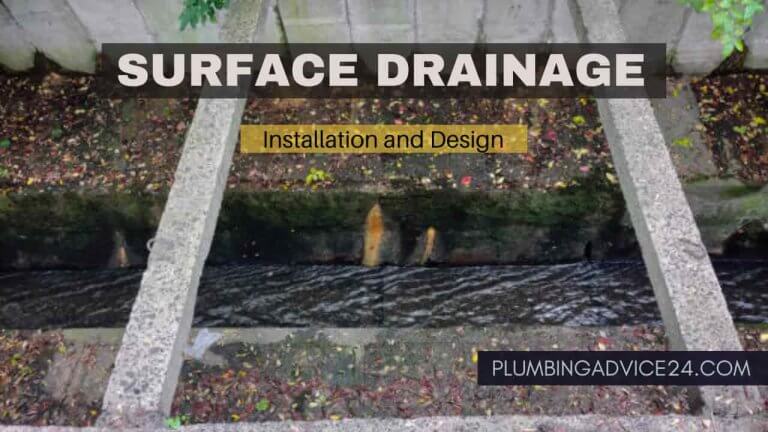What Is a Sewer Line | Types of Sewer Pipes | Best Sewer Line Insurance Company
Friends, we all know about sewers; we all use them in our homes in general. Sewer lines are an important part of providing cleanliness and keeping us away from dirt. In this chapter, we will look at sewer pipelines, in which we will learn about the different types of sewer pipes. How types of sewer pipes, where sewer pipe is used, whether it should be used or not, sewer pipe advantages and disadvantages, etc.
What Is Sewer Line?
A sewer line is an underground pipe or tunnel system that transports sewage(but not rainwater) from homes and commercial buildings to a disposal or wastewater treatment plant. If your home has a sewer system, a sewer line is installed between your home sewer and the main sewer. This line is located below the ground in your yard.
It is considered part of your plumbing system and is your responsibility for maintenance and repair. Sewer lines are usually sloping down to transport water flow away from your home and into your city’s sewer. So let us now get more information about the types of sewer pipes.
How Many Types of Sewer Pipes?
In older properties built before the 1950s, you may find clay pipe, cast-iron pipe, or fiber hose pipe called Orangeburg.
Homes built since the 1970s have plastic PVC or ABS sewer pipes. In rare cases, you may find an old cast-iron or clay sewer line in a new house. The yard area of the new houses is where the old sewer pipe will resume and continue to the city sewer main.
PVC and ABS pipes are the most common pipes for newer homes. These have many benefits for your sewer lines. It is obvious why people have made the switch. So let us discuss all the types of sewer pipes.
There are different types of sewer pipes, as below,
- PVC Sewer Pipe
- ABS Sewer Pipe
- Cast Iron Sewer Pipe
- Concrete Sewer Pipe
- Orangeburg Sewer Pipe
- Clay Sewer Pipe
- Galvanized Sewer Pipe
- Copper Sewer Pipe
So let’s learn more about these sewer pipes,
1. PVC Sewer Pipe
PVC sewer pipe is very lightweight and humble, which makes it the easiest to install. It is also strong, durable, and corrosion-resistant, making it the preferred material for homeowners and municipal projects due to its low cost and ease of use. PVC has the lowest chance of damage which makes it last longer.
PVC sewer pipe has some weaknesses along with ease of installation. This pipe can degrade PVC by exposure to ultraviolet (UV) rays, so it is not recommended for outdoor use.
Must Read: What Is a PVC Pipe | How to Measure PVC Pipe Size | PVC Pipe Installation Cost
2. ABS Sewer Pipe
ABS sewer pipe is a plastic pipe used for indoor or outdoor plumbing, usually in sewer, waste, or vent pipes. PVC and ABS sewer pipes are quite similar, but they have different codes and use different adhesives. They are easily recognizable by their color, PVC is white, and ABS is black.
While PVC is more flexible, ABS is a strong, rigid pipe that works excellently underground and in extremely cold temperatures. Uv rays can degrade plastic, so ABS pipes should not be installed where exposed to the sun.
Must Read: What Is ABS Pipe | Why Is ABS Pipe Prohibited | How to Measure ABS Pipe | ABS Pipe Installation Cost
3. Cast Iron Sewer Pipe
Cast iron sewer pipes are commonly used in older homes. It has incredible power compared to other sewer pipes. This pipe can withstand a pressure of more than two tons per linear foot in diameter well.
Cast iron sewer pipes also have some disadvantages, such as these pipes being heavy and difficult to cut manually. To cut it into the ground, you need a clay pipe cutter.
Must Read: What is Cast Iron Pipe | How to Repair Cast Iron Pipe | Cast Iron Pipe Replacement Cost
4. Concrete Sewer Pipe
Concrete sewer pipe is a very popular material choice for municipal sewage applications. These sewer pipes are relatively more durable than clay sewer pipes. They are also susceptible to cracking and aging. But for the most part, it can be cheap. Properly covered, it will withstand a lot of adverse conditions.
The biggest challenge in working with concrete pipes is properly completing the installation. Improperly installed concrete pipes can fail very quickly. Extremely acidic soils or chemicals can degrade concrete pipes.
Must Read: What Is Asbestos Cement Pipe | Why Is Asbestos Dangerous | Asbestos Cement Pipe Removal Cost
5. Orangeburg Sewer Pipe
Orangeburg sewer Pipe is a bituminized pipe made from wood fibers bound with a special water-resistant adhesive. Subsequently, it was impregnated with liquefied coal tar pitch. These pipes were widely used from the 1860s to the 1970s. It was lightweight to carry and easy to cut with a regular wooden saw, making it a favorite of many plumbers of the time.
Orangeburg pipes are not currently in use. Instead, it is used in collapsed conditions during construction. The main advantage of this sewer pipe is that it is a water-resistant pipe. Most Orangeburg sewer pipes have a lifespan of no more than 50 years, so it is now rare to find them.
Must Read: What Is Plumbing Pipe | 22 Different Types of Plumbing pipes
6. Clay Sewer Pipe
Clay sewer pipe is the most common type, made from a mixture of clay and shell and capable of moving most of the waste. These pipes were commonly used in older homes.
While they are no longer popular, this pipe can still be used for new installations today. A major advantage of clay sewer pipe is that it is passive, making it extremely resistant to chemical degradation, but it is heavy and difficult to cut.
Clay sewer pipes are not flammable, so they do not catch fire. However, clay pipes are rust-proof but not as strong as reinforced concrete. These pipes are prone to breakage due to pressure from underground sources.
Due to the more advanced and efficient material pipes, these are rarely used and are difficult to find in the market.
Must Read: What Type of Piping Is Used in Homes | Types of Pipes for Water Supply
7. Galvanized Sewer Pipe
Galvanized sewer pipes are designed to last longer and are widely used in home drainage systems. These pipes are dipped in molten zinc, increasing their strength and enabling them to resist rust.
Although it is usually a bit more expensive than other drain pipes due to the galvanized process, Galvanized sewer pipes can be used almost everywhere in your home.
Must Read: What Is Galvanized Pipe | What Is Galvanized Pipe Used For | How to Measure Galvanized Pipe
8. Copper Sewer Pipe
Copper sewer pipes are considered to be more expensive than other sewer pipes. But, they are extremely durable and have the highest degree of resistance to heat. This pipe can be used where the pipe walls are likely to expand and if the sewer pipe is covered with concrete. These pipes must be used indoors as copper is often a thief target.
Must Read: What Is Copper Pipe | Types of Copper Pipes | Copper Pipe Size | Copper Pipe Cost
How Many Types of Wastewater Treatment Plant?
Wastewater treatment is a process used to treat wastewater, which can be recycled or made suitable for other household or industrial purposes. The main purpose of wastewater treatment is to reuse or properly dispose of treated wastewater safely.
These processes include physical, chemical, and biological treatment processes. Water treatment plants can be distinguished by the type of wastewater to be treated.
Types of wastewater treatment plants include:
- Sewage treatment plants
- An industrial wastewater treatment plant
- An agricultural wastewater treatment plant
- Leachate treatment plants
For domestic wastewater, the treatment plant is called a sewage treatment plant, while for industrial wastewater, the treatment plant is called an industrial wastewater treatment plant. Other types of treatment include agricultural wastewater treatment plants and leachate plants.
Must Read: What Is Pipe Fittings | 12 Types of Pipe Fittings
Which Is the Best Sewer Line Insurance Company?
In sewer line insurance, you have to pay a monthly fee. Then whenever you have a problem, you will have access to a specialist technician who will come to your home and repair sewer lines. These can include water backups, sewer backups, blocked sewer pipes, sump pump problems, broken water lines, and more.
Not all policies are the same, so read the insurance policy carefully and only sign off. Think about the types of insurance coverage you have had in the past and what features you need in the future.
The best sewer line insurance company is as follows.
- Lemonade Home
- American Family Insurance
- Choice Home Warranty
- American Water Resources
- Mercury Insurance
- HomeServe
- Service Line Warranties of America
- Erie Insurance
Must Read: What Is Plumbing Trap | 15 Different Types of Plumbing Traps
What Is a Sewer Cleanout?
A sewer line cleanout, also called a drain cleanout, is a pipe with a cap or a pipe providing access to a sewer line through which a barrier can be removed. It is a direct access point to the main sewer line inside or outside your home. Your main sewer line runs down your house and connects to the city sewer line.
Sewer cleanout makes it easy for plumbers, sewer professionals, or other technicians to access clogs and backups without digging the line into the ground. Only plumbing professionals should use a sewer cleanout, but in case of an emergency, it is good for you to know where it is.
What Is the Main Sewer Line?
The main sewer line is located somewhere between your home sewer line and the city sewer line. Before leaving your home, all your sewers are emptied into your main sewer line. When backing up your main sewer line, you need to know where your sewer cleanout is located.
What Is the Difference Between a Sewer Line and a Drain Line?
A drain line is a pipe that serves only one building and carries water and wastewater to the sewer line. The sewer line is designed to carry solid waste, while the drainage line is designed to carry excess water.
How Much Is Sewer Line Inspection Costs?
Just as a water pipe inspection detects a leak, a sewer line can be inspected. A long tube or Inspection camera is inserted into your sewer line, giving the plumber a good idea of what’s going wrong. It can detect clogs, leaks, or damage to the pipe.
Repairing sewer lines is expensive, while inspecting sewer lines is less expensive. Depending on some of the key factors, most sewer line inspection costs can range from $ 100 to $ 800.
Is a Drain Pipe a Sewer Pipe?
A drain is a pipe that serves only one building, conveying water and wastewater to the sewer. A lateral drain is a section of drain located outside the boundary of a building, which connects to drains from other buildings to form a sewer.
Can You Use PVC for Sewer Lines?
Schedule 40 PVC pipe is suitable for sewer and wastewater. PVC pipe can be used for drain, waste, and vent piping systems.
If You Liked This Post? So Share It with Your Friends
Suggested Articles:
- What is Plumbing Tools | 31 Types of Plumbing Hand Tools
- 33 Different Types of Wrenches | Best Company for a Wrench
- What Is Plumbing Pipe Materials | What Is Used to Make Plumbing Pipes
- What Is Steel Pipe | Steel Pipe Applications | Steel Pipe Size | Steel Pipe Cost
- Types of Steel Pipes | Stainless Steel Pipe Vs Carbon Steel Pipe
- Types of Metal Pipes | Seamless Vs Welded Pipes
- Difference Between PVC and CPVC
- Galvanized Pipe Problems and Their Replacement Cost
- Polypropylene Pipe | PP-R Pipe | PP Pipe Complete Guide
- Polybutylene Pipe Problems and Their Solution-Complete Guide
- Lead Pipe Poisoning Hazards and Solutions













